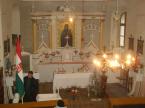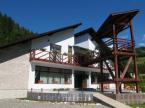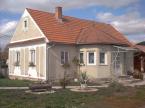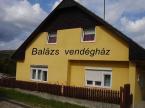Information
Sighiºoara (Hungarian: Segesvár, German: Schäßburg, Latin: Castrum Sex) is a city and municipality on the Târnava river in Transylvania, Romania. It is in Mureº county and has a population of 32,287 (2002).
History
A Dacian settlement near Sighiºoara known as Sandova dates as far back as the 3rd century BC. It was the site of an Imperial Roman castrum and legion base from the 2nd century. During the 12th century, German craftsmen and merchants known as the Transylvanian Saxons were invited to Transylvania by the King of Hungary to settle and defend the frontier of his realm. The chronicler Krauss lists a Saxon settlement in Sighiºoara by 1191. By 1280 it was known by the Latin name of Castrum Sex, and by 1298 by the German one of Schespurch. By 1337 Sighiºoara had become a royal center for the kings, who awarded the settlement urban status in 1367 as the Civitas de Segusvar.The town played an important strategic and commercial role at the edges of Central Europe for several centuries. Sighiºoara became one of the most important towns of Transylvania, with artisans from throughout the Holy Roman Empire visiting the settlement. The German artisans and craftsmen dominated the urban economony, as well as building the fortifications protecting the town. It is estimated that during the 16th and the 17th centuries Sighiºoara had as many as 15 guilds and 20 handicraft branches. The Baroque sculptor Elias Nicolai lived in the town. The Wallachian prince Vlad Þepeº, born in Sighiºoara in 1431, minted coins in the town and issued the first document listing the town's Romanian name Sighiºoara.
The town was the setting for George I Rákóczi's election as Prince of Transylvania and King of Hungary in 1631. Sighiºoara suffered military occupation, fires, and plagues during the 17th and 18th centuries.
The nearby plain of Albeºti was the site of the Battle of Segesvár, where the revolutionary Hungarian army led by Józef Bem was defeated by the Russian army led by Luders on 31 July 1849. A monument was constructed in 1852 to the Russian general Skariatin, who died in the battle. The Hungarian poet Sándor Petõfi is generally believed to have been killed in the battle, and a monument was constructed in his honor at Albeºti in 1897. After World War I Sighiºoara passed with Transylvania from Austria-Hungary to the Kingdom of Romania.
Central Sighiºoara has preserved in an exemplary way the features of a small medieval fortified town, it has been listed by the UNESCO as a World Heritage Site. Each year, a Medieval Festival takes place in the old citadel in July.
Owing to its connection to the myth of Dracula through Vlad Þepeº, the construction of a Dracula theme park in Sighiºoara was considered but ultimately rejected, as it would have detracted from the medieval style of the town.
Sights
Sighiºoara is perhaps the most enchanting medieval town in Transylvania, due to its well preserved walled old town. The landmark of the town is the old Clock tower, a 64m high tower built in 1556. It is today a museum of history of the town.Other interesting sights are:
- The 14th century medieval citadel
- The House of Vlad Þepeº, close to the Clock Tower, today a restaurant.
External links
- Take a virtual stroll through Sighiºoara
- See pictures from Sighiºoara at The Real Transylvania
- RoTravel.com: Sighiºoara
- Sighiºoara online (in Romanian)
- Sighiºoara Photo Gallery (pictures of the city during the yearly Medieval Art Festival)

 English
English









